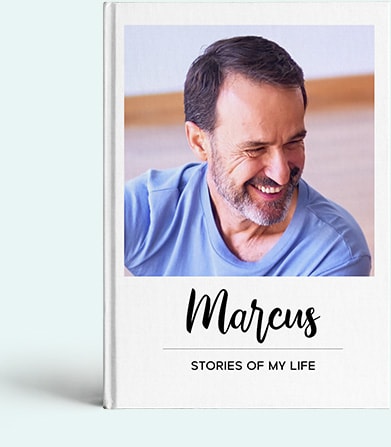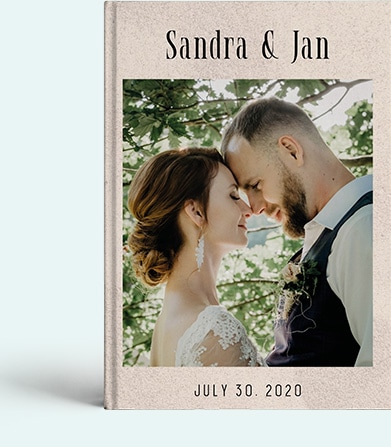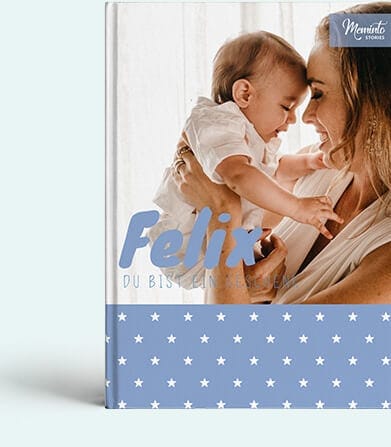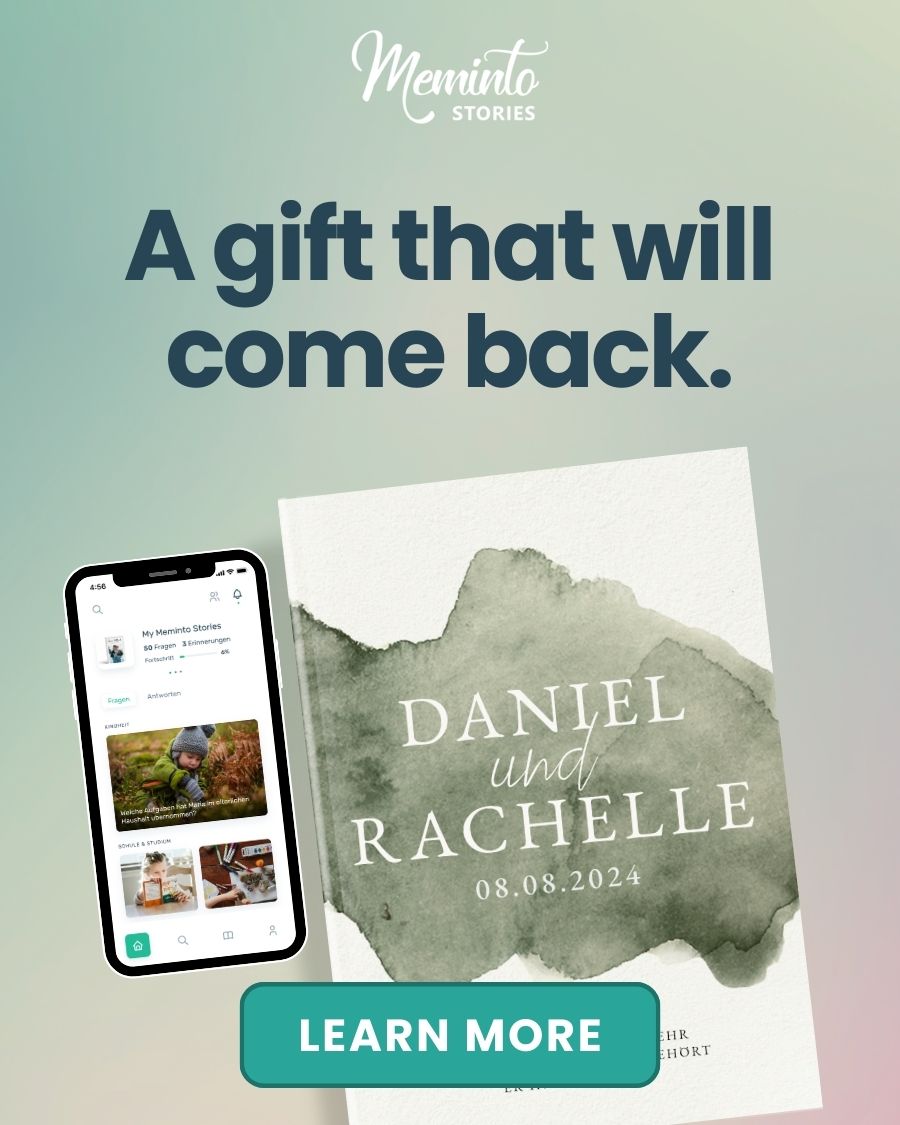You’re growing a whole new life – and quietly wondering if these fleeting moments will slip away before you capture them. You’ve been taking bump photos every week, saving ultrasound pictures, and mentally noting all those special pregnancy moments you want to remember. But they’re scattered across your phone, stuck on the fridge, or floating around in your head as “things I should write down someday.” Meanwhile, this incredible journey to parenthood is flying by, and you’re worried you’ll forget the little details that make this time so special.
Maybe you’ve started a pregnancy journal but only filled out the first few pages, or you’ve been meaning to organize those ultrasound photos into something meaningful. Perhaps you’ve seen other moms’ beautiful pregnancy books and wondered how they managed to create something so thoughtful while dealing with morning sickness and pregnancy brain.
This guide will show you how to create a pregnancy memory book that captures the emotions, anticipation, and love that define your journey to parenthood. You’ll learn simple ways to document your experience without artistic skills or endless free time, creating something you and your child will treasure forever.
🗝️ Key takeaways
- Pregnancy memory books preserve the emotional journey and transformation into motherhood, not just medical milestones and bump photos
- Starting early in the first trimester ensures you capture details that feel overwhelming now but become precious memories later
- Document authentic feelings and fears alongside the joy, creating an honest record of your complete pregnancy experience
- Include partner perspectives and family reactions to show the love and anticipation surrounding your baby’s arrival
- Platforms like Meminto make it easy to capture thoughts and milestones through guided prompts without requiring artistic skills or extensive time commitment
❓ Why create a pregnancy memory book?
Pregnancy is one of those experiences that feels both endless and fleeting. In the moment, waiting for each milestone can feel like forever.
But once your baby arrives, the details of those nine months start blurring together surprisingly quickly. A pregnancy memory book preserves not just what happened, but how it felt to live through this transformation.
Your pregnancy story matters beyond the baby book
Most baby books start with birth, but your child’s story actually begins much earlier. The excitement when you first saw those two lines, the way you told your partner the news, your hopes and dreams during those early weeks, these moments shaped who you became as a mother before your baby even arrived.
“I initially wanted to document my life for my children. Thanks to Meminto’s insightful questions and prompt support, my story flourished into over 300 pages across two volumes.”
– Maria, Germany
Physical changes happen faster than you realize
Your body transforms week by week, but you’re living in it daily, so the changes feel gradual. Looking back, you’ll be amazed at how much happened in such a short time.
Having a record helps you remember not just how you looked, but how you felt in your changing body, what surprised you, what made you nervous, and what filled you with wonder.
Emotions evolve throughout the journey
Early pregnancy excitement differs from second-trimester confidence, which differs from third-trimester anticipation and anxiety.
These emotional shifts are part of your story too. Documenting them helps you process the experience while preserving the complexity of becoming a parent.
Your child will want to know about this time
One day, your child will ask questions about when they were “in your tummy.”
They’ll want to know what you ate, how you felt, what you hoped for them, and how excited everyone was about their arrival.
A pregnancy memory book gives you specific stories to share instead of vague recollections.
Partners and family perspectives add richness
Your pregnancy affects everyone who loves you. Grandparents-to-be have their own excitement and memories.
Your partner experiences the journey differently than you do. Capturing these multiple perspectives creates a fuller picture of how your baby was welcomed before they were even born.
The Meminto Life Book.
Answer a life question weekly and hold a real book in your hands within a year.
🎞️ What to include in your pregnancy memory book
Creating a pregnancy memory book doesn’t mean documenting every single day or symptom. It’s about capturing the moments and feelings that define your unique journey to parenthood. The best pregnancy books mix big milestones with everyday emotions, creating a complete picture of this transformative time.
Essential milestone moments that mark your journey
Start with the obvious but important firsts like finding out you’re pregnant, your first doctor’s appointment, hearing the heartbeat, learning the gender, and each ultrasound. But don’t stop there.
Include the first time someone noticed your bump, when you felt the first kick, or when you finally looked “obviously pregnant” instead of just bloated. These progression moments help tell the story of how your baby grew and how you changed alongside them.
Your authentic thoughts and feelings throughout
This is where your pregnancy book becomes truly personal.
Document not just what happened, but how you felt about it. The overwhelming joy mixed with terror during early weeks, the relief when morning sickness finally ended, the strange experience of feeling like your body isn’t entirely your own.
“So much more than just a photo book. Through the questions, beautiful old memories come up again. Even videos could be loaded into the book. Emotions like when it all happened!”
– Verena, Austria
Your honest emotions make the book real rather than just a highlight reel.
Partner and family reactions that show love surrounding your baby
Include how you told your partner about the pregnancy, your parents’ reactions to becoming grandparents, and siblings’ responses to becoming aunts and uncles.
Document funny comments people made about your bump, unsolicited advice you received, and the sweet ways people showed their excitement. Your baby will love knowing how many people were thrilled about their arrival.
Physical keepsakes that bring memories to life
Ultrasound photos are obvious choices, but consider including hospital bracelets from appointments, the pregnancy test that started it all, congratulations cards, and belly measurement notes.
Save a page from the calendar when you found out, ticket stubs from movies you saw while pregnant, or photos of the nursery coming together. These tangible items add texture to your story.
Special moments and celebrations along the way
Baby showers, gender reveal parties, nursery shopping trips, and “babymoons” all deserve space in your memory book. But also include smaller celebrations like the first maternity clothes purchase, setting up the crib, or the day you finally felt ready to be a mom.
As Carolin from Germany noted about memory books,
“What I really liked is the 10% discount for creating a second book for another child after the first one. With the capacity for up to 250 pictures, it’s also cheaper than a photo book, especially with 300 pages.”
There’s room for both big events and quiet moments that matter to you.
Dreams and expectations for your future family
Write letters to your unborn baby, document your hopes for their personality, and record what you imagine motherhood will be like.
Include your birth plan, chosen names and their meanings, and the values you hope to pass on.
These forward-looking sections become especially meaningful to read later, whether your expectations came true or surprised you in different ways.
📋 How to create a pregnancy memory book: 5 essential steps
Creating a pregnancy memory book might feel overwhelming when you’re already dealing with appointments, planning, and all the emotions that come with expecting. The key is breaking it into simple steps that work with your energy levels and schedule, not against them.
These five steps will guide you from scattered pregnancy moments to a beautiful keepsake that tells your complete story
🚩 Step 1: Choose your format and start early
The biggest mistake expecting parents make is waiting until the “perfect moment” to start their pregnancy memory book. But there’s no perfect moment when you suddenly have unlimited time and energy. The best time to start is now, even if you’re only six weeks pregnant and can barely keep crackers down.
Physical vs. Digital: The Great Pregnancy Book Debate
| Format Type | Perfect For | Reality Check |
| Traditional scrapbook | Craft-loving moms who enjoy hands-on projects | Requires supplies, space, and energy you might not have during pregnancy |
| Digital platforms | Tech-comfortable parents who want multimedia options | Easier to update regularly, especially from your phone during appointments |
| Hybrid approach | Best of both worlds lovers | Start digital for convenience, print later for physical keepsake |
The truth about pregnancy brain: it’s real, and it affects your ability to remember details you think you’ll never forget.
Barbara from Germany experienced this firsthand:
“We started a Meminto when my mother was still alive and we made a lot of audio recordings. Now I listen to it from the book every time I miss her. The Meminto team has faithfully helped for over a year. It was fun!”
Just like Barbara captured precious family moments, starting early means you won’t lose those early pregnancy details that feel overwhelming now but become precious later.
Why Starting in the First Trimester Matters
- Week 6, you can barely function and think pregnancy lasts forever
- Week 36, you are desperately trying to remember what early pregnancy felt like
Those first trimester struggles, like the exhaustion, food aversions, and emotional rollercoaster are part of your story too. You might not feel like documenting them now, but in the future you will appreciate having those raw, honest memories preserved.
The “Good Enough” Philosophy
Perfectionist moms, listen up: your pregnancy book doesn’t need to look like Pinterest.
A few voice memos recorded while waiting for appointments, photos taken with your phone, and honest thoughts typed during your lunch break create a more authentic story than any elaborate scrapbook page.
Starting Small: Your First Week Action Plan
Choose your platform (hint: your phone works perfectly), take a photo of your first positive test, and write one sentence about how you felt in that moment. That’s it. You’ve officially started your pregnancy memory book.
The goal isn’t creating a masterpiece immediately. It’s beginning the habit of noticing and recording moments before they slip away in the beautiful chaos of pregnancy.
🚩 Step 2: Document key milestones
Pregnancy milestones aren’t just about medical appointments and ultrasounds, though those matter too. They’re about marking the moments when everything shifts, when your baby becomes more real, and when you start feeling like a mom rather than just someone who happens to be pregnant.
The Monthly Progression Beyond Bump Photos
Sure, everyone takes bump photos, but the real story lives in what you’re thinking about each month. Month three might be about surviving morning sickness, while month seven is all about nesting instincts kicking in.
Werner from Germany found success with this approach:
“With just one question per week, I was able to record my life story. That was a lot of fun! I am proud of my book and am already preparing the second book.”
Apply this same gentle consistency to pregnancy by capturing one meaningful detail each month.
Appointment highlights that actually matter
The Ultrasound Memory Time Capsule
Don’t just save the pictures; save the context. What song was playing in the waiting room? Did the tech have trouble getting baby to cooperate? Was your partner speechless or couldn’t stop talking? These details transform clinical photos into story-rich memories.
First Movement: The Game-Changing Milestone
The first time you feel your baby move changes everything. It usually happens around 18-25 weeks, often when you’re doing something completely mundane like sitting at your desk or lying in bed.
Document not just when it happened, but where you were, what you were thinking about, and how it made this whole pregnancy thing suddenly feel real.
Milestone Moments Nobody Warns You About
- The first time someone asks when you’re due (and you actually look pregnant)
- When maternity clothes finally fit better than regular clothes
- The day you can no longer see your feet
- When you first think “I’m ready to meet this baby”
- The moment you realize you’re going to be responsible for keeping a tiny human alive
Making Medical Appointments Meaningful
Transform routine appointments into memory-worthy moments by noting one specific detail each time. Maybe it’s how your partner reacts to hearing the heartbeat, or the way the baby always seems to hide during ultrasounds, or how your doctor’s reassurance made you feel.
Jost from Germany reflected on his documentation experience:
“My daughter asked me to write something down about my youth and her grandparents. I came across Meminto. It’s a great way to write everything down. A memoir like this also clarifies things for oneself. The customer service is first class. I can only recommend Meminto.”
Recording these medical milestones helps you process your own journey toward parenthood.
The Countdown Mindset Shift
Early pregnancy feels endless, but somewhere around month seven or eight, the countdown mentality kicks in.
Document this shift from “how much longer?” to “we need more time to prepare!” This transition marks when you stop being pregnant and start becoming a mom.
🚩 Step 3: Capture the emotional journey
Pregnancy emotions don’t follow any logical timeline or social media-worthy narrative. One day you’re crying because you can’t find pickles at the grocery store, the next you’re overwhelmed with love for a baby you haven’t met yet. These messy, contradictory feelings are the heart of your pregnancy story.
The Emotional Rollercoaster Nobody Prepares You For
- First trimester: “Am I actually pregnant or do I just feel terrible?”
- Second trimester: “I am a glowing goddess of fertility!”
- Third trimester: “Get this baby out of me, but also I’m terrified of labor”
Each phase brings its own emotional problems. Early pregnancy often involves a strange combination of excitement and disbelief.
You might feel protective of a baby you can’t see or feel yet. The second trimester typically brings relief and genuine excitement, while the third trimester mixes anticipation with anxiety about everything from labor to whether you’ll be a good mom.
Writing Real Feelings Instead of Instagram Captions
Surface-level “pregnancy is amazing” posts don’t capture what you’re actually experiencing. Instead of generic excitement, document the specific moments that made you laugh, cry, or pause in wonder.
Rather than “feeling blessed,” write about spending an hour researching car seats and feeling overwhelmed by all the choices. Instead of “glowing,” describe how your back aches constantly, but watching your belly move during baby’s active time makes it all worth it.
Replace “can’t wait to meet baby” with wondering whether the baby will have your eyes or your partner’s, and if they’ll be calm or energetic.
Your Partner’s Secret Pregnancy Experience
Don’t forget to capture how your partner is processing this journey.
Viktoria from Switzerland discovered the value of collaborative storytelling:
“Together with my son I have been able to record almost a century of history. We have created 16 books in German and seven in English. My family lives widely scattered. They were very happy.”
Your partner’s pregnancy experience differs completely from yours, and their perspective adds depth to your family’s story.
Ask them questions like: What was your first thought when you found out? What are you most excited about? What worries you? How has watching me change made you feel? Their answers might surprise you and will definitely enrich your pregnancy record.
The Worried Mom Mind at 2 AM
Pregnancy comes with fears that feel too scary or silly to voice, but they’re part of your honest experience.
Worry about labor pain, concerns about being a good parent, anxiety about your relationship changing, financial stress, wondering if you’ll love your baby immediately, these thoughts are normal and worth documenting.
Writing them down often helps process them and provides perspective later. What felt overwhelming at 20 weeks might seem manageable by 35 weeks, showing your growth throughout pregnancy.
When Grocery Shopping Makes You Cry
Some of your strongest pregnancy emotions happen during completely mundane activities.
Feeling baby kick while you’re cooking dinner, getting emotional over a commercial, experiencing sudden gratitude while folding tiny clothes, these everyday moments often carry the most emotional weight.
Dreams and Daydreams About Your Future Family
Document what you imagine about your baby and your future life together. What do you hope they’ll be like? How do you picture your first day home together? What traditions do you want to start? These forward-looking emotions are part of falling in love with someone you haven’t met yet.
As Selma from the UK reflected:
“With Meminto Stories I found a way to keep all my flashbacks of the first adventure with our child in a book. Now we can cherish them forever.”
Your pregnancy emotions are the beginning of your parenting adventure, and they deserve to be preserved alongside the physical milestones.
🚩 Step 4: Include special moments and keepsakes
Some pregnancy memories live in objects you can hold, events you celebrate, and moments that feel too special for everyday documentation. These are the highlights that punctuate your nine-month journey, the times when everyone gathers around your growing belly with excitement and anticipation.
Baby Shower Magic and the People Who Show Up
Baby showers aren’t just about gifts, though the tiny clothes and gadgets are adorable. They’re about witnessing how many people are excited to welcome your baby. Document not just what you received, but who came, what made you laugh, and which moment brought you to tears.
Maybe it was your grandmother’s advice about motherhood, your best friend’s heartfelt card, or watching your partner awkwardly guess baby food flavors.
Eileen from Germany captured this sentiment perfectly:
“Thanks to Meminto, I finally had the opportunity to create a great memory book for my children without spending a lot of time.”
These gatherings create memories worth preserving with minimal effort.
The Nursery Preparation: From Empty Room to Baby’s First Home
Track your nursery’s transformation through photos and feelings, not just Pinterest-worthy final results. Include the day you first walked into the empty room and tried to imagine a crib, the moment you painted the walls, and your partner’s face when the furniture finally arrived.
Document the decision-making process too. Why did you choose that specific theme? What made you fall in love with the crib? How did it feel to wash and fold tiny clothes for the first time? These details turn nursery photos into stories.
Gender Reveal
Whether you found out at an ultrasound appointment or threw a party with colored cake, gender reveals mark a turning point in pregnancy. Suddenly, “the baby” becomes “he” or “she,” and names become real considerations instead of abstract lists.
Capture everyone’s reactions, not just your own. How did grandparents-to-be respond? Did anyone have strong predictions? What was the first thing people said after finding out? These reactions show how your baby was becoming real to your whole family.
Physical Keepsakes That Tell Your Story
| Keepsake Type | Why Save It | How To Include It |
| Positive pregnancy tests | The moment that started everything | Photo with story of when/where you took it |
| Hospital bracelets | Evidence of appointments and progress | Scan or photo with notes about each visit |
| Belly measurement strings | Physical growth record | Include monthly with thoughts about changes |
| First baby purchase | When preparing became real | Photo with story of what made you buy it |
Babymoon Adventures and Last-Minute Freedom
Document your final trips as a couple, whether it’s a planned babymoon or just dinner dates that become more challenging to coordinate. These moments capture your last chapter as just the two of you before becoming three.
Include where you went, what you talked about, and how pregnancy affected the experience. Could you walk as much as usual? Did you need extra bathroom stops? How did it feel knowing this might be your last quiet getaway for a while?
Unexpected Celebrations That Surprised You
Not every special moment happens at planned events. Maybe it was the day a stranger smiled at your bump, when your dog seemed to understand you were pregnant, or the evening you and your partner spent an hour just watching your belly move.
Richard from the UK shared his experience with preserving unexpected moments:
“I recorded my entire book, and Meminto transcribed it. It was simple and still led to something remarkable.”
Often the most remarkable pregnancy memories happen during ordinary days when something makes the experience feel magical.
Final Preparations
Document those last-minute preparations when the baby’s arrival feels imminent. Installing the car seat, packing the hospital bag, and having your final prenatal appointment, these tasks mark the transition from pregnancy to parenthood.
Include how you felt completing each task. Relief? Anxiety? Excitement? These final preparations often bring a mix of “we’re ready” and “we’re definitely not ready” that captures the complexity of approaching parenthood.
🚩 Step 5: Prepare for baby’s arrival
The final weeks of pregnancy exist in a strange time warp where days crawl by, but you simultaneously feel like you’re running out of time to prepare. This is when your pregnancy memory book shifts from documenting what’s happening to capturing your hopes, fears, and final thoughts before everything changes forever.
Nesting Phase Documentation
Suddenly, you’re reorganizing closets at midnight and washing baby clothes that won’t fit for months. This nesting instinct feels compulsive and slightly ridiculous, but it’s your body and mind preparing for the biggest transition of your life. Document the crazy things you find yourself doing.
Maria from Germany experienced something similar when documenting her journey:
“I initially wanted to document my life for my children. Thanks to Meminto’s insightful questions and prompt support, my story flourished into over 300 pages across two volumes.”
Sometimes our preparation becomes more elaborate than we ever imagined.
Photograph the nursery in its “ready” state, before it gets lived in. Write about which tasks felt urgent versus which ones you kept putting off. Note the moment when you finally felt “ready” or realized you’d never feel completely prepared, and that was okay.
The Birth Plan Reality Check
Most first-time parents approach birth with detailed plans and strong preferences about pain management, delivery positions, and immediate postpartum care. Whether your birth goes according to plan or takes unexpected turns, documenting your prebirth hopes provides important context for your baby’s arrival story.
Write down not just your medical preferences, but your emotional expectations. How do you imagine feeling when you first see your baby? What are you most nervous about regarding labor? What are you most looking forward to? Which family members do you want to call first? These details create a before-and-after comparison that shows how birth changed or confirmed your expectations.
Last Conversations with Your Unborn Baby
The final weeks offer a unique opportunity to talk to your baby while they’re still inside you. You can feel their movements, you know their active times, and you’re starting to recognize their personality through kicks and wiggles. Write letters or record voice memos sharing your thoughts about meeting them soon.
Tell them about the world they’re about to enter, what season it is, what’s happening in your family, how excited everyone is to meet them. Share your hopes for their personality, your dreams for their future, and how much love is already surrounding them. These conversations become precious keepsakes that capture your voice before you became their mom.
Final Bump Photos with Meaning
Those last pregnancy photos should document more than just size. Capture yourself doing things you won’t be able to do pregnant again like sleeping on your stomach (sort of), seeing your feet, or moving without planning each step carefully. Photograph your hands on your belly, your partner talking to baby, or quiet moments when you’re feeling them move.
Include photos of the little things that defined late pregnancy for you. The body pillow fortress on your bed, the collection of antacids on your nightstand, the maternity clothes that finally fit perfectly just as you’re about to stop wearing them.
The Hospital Bag Meditation
Packing your hospital bag forces you to imagine the next few days in concrete terms. You’re choosing the outfit your baby will wear home, the clothes you hope to fit into after delivery, and comfort items for labor. Document what you packed and why certain items felt important.
Richard from the UK found that documenting personal experiences led to something meaningful:
“I recorded my entire book, and Meminto transcribed it. It was simple and still led to something remarkable.”
Sometimes the simplest preparations become the most significant memories.
Countdown Anxiety and Excitement
The final days mix anticipation with anxiety in ways that feel almost contradictory. You’re desperate to meet your baby but terrified of labor. You can’t wait to not be pregnant anymore, but worry about how your life will change. You feel ready to be a mom but completely unprepared for the responsibility.
These conflicting emotions are normal and worth capturing. Write about what keeps you awake at night, what makes you smile when you think about the future, and how it feels to be on the edge of such a major life transition. Document the last normal day, the last dinner as a couple, the last night of sleep (such as it is) without a baby in the house.
Creating the Bridge to Parenthood
Your pregnancy memory book ends where your parenting story begins. The final entries should acknowledge this transition while celebrating the journey you’ve just completed. You’ve spent nine months growing a baby and becoming a mom simultaneously. That transformation deserves recognition and reflection before the chaos of newborn life takes over.
Get $10 off your first Meminto book project 📖
We appreciate you for reading this article. As a token of our gratitude, we would like to offer you a special $10 discount on your first book with Meminto!
💡 Conclusion: Your pregnancy legacy
Your pregnancy is more than just nine months of waiting. It’s the story of how you became a mother, complete with all the messy emotions, beautiful moments, and everyday magic that happened while your baby grew.
The memories you’re making right now will fade faster than you think. But the ones you take time to write down, photograph, or record will stay vivid for decades. One day, your child will ask about this time, and you’ll have real stories to tell instead of hazy recollections.
Start recording your journey today – your child’s first story begins with yours. Start your pregnancy memory book with Meminto.





















